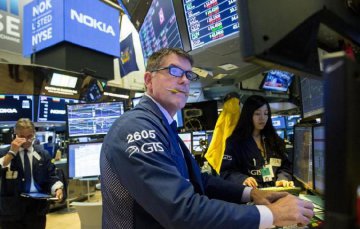
The US market plummeted significantly again on October 24. As of closing, the three major US stock indexes saw declines ranging from 2.4 percent to 4.43 percent. The Dow Jones Industrial Average Index fell by over 600 points. So far, S&P 500 and Dow Jones Index have given back all the gains for this year.
The weak economic data released lately has slashed investors’ confidence. A total of 553,000 units of new houses were sold in the US in September, down by 5.5 percent from the previous month, according to the US Department of Commerce. Although inflation in most regions was moderate, the American factories have raised prices due to taxation rise, which worsened market sluggish sentiment.
Among the 11 major sectors under S&P 500, 8 sectors decreased while 3 sectors inched up. Telecommunication service and technology sectors led the decline with 4.88 percent and 4.43 percent, respectively. Public utilities and housing sectors led the gains with 2.30 percent and 1.13 percent, respectively.
According to statistics made by Refinitiv under Thomson Reuters, global technological stocks have lost about 1 trillion US dollars in market capitalization as a result of worries on slowdown in global demand and valuation. The increasing US Treasury yield also drove the declining trend of technological stocks. The US Treasury yield set a new high record over seven and a half years, which made investors turned from the higher-risk stock market to higher-yield bond market.
Investors’ risk aversion sentiment surges as global economic growth is threatened by several risks, according to Economic Information Daily. These risks include geopolitics tensions in Middle East region, obstacles in Brexit negotiation, Italian government debt risk and worsening global trade disputes.
FXTM analyst Lukman Otunuga believed that currencies of emerging markets are still sold-off by investors as geopolitics problems weaken investors’ risk preference. Risk aversion sentiment continues to dominate the market this week, which is unfavorable to currencies of emerging markets. If the US dollar is pushed up by risk-aversion capitals, emerging markets are expected to face increasing pressure on sell-off.
Translated by Vanessa Chen




















Latest comments